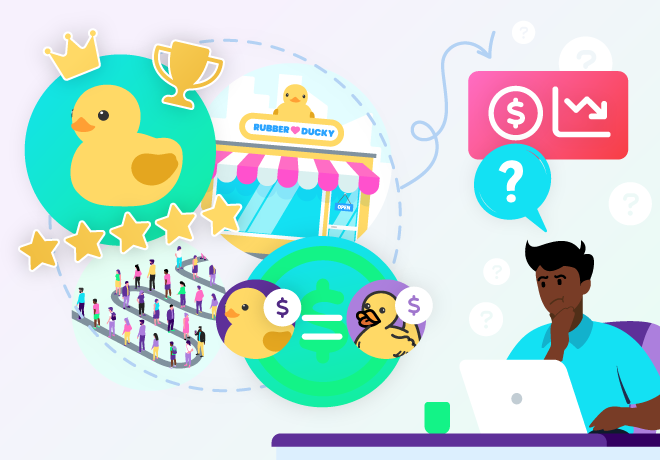
Boost training outcomes with concise and conscious eLearning content
Students slog through the difficult language of epic works like Beowulf to learn the history of literature, to glean insight into human history and ancient culture … and because they have to if they want to pass their high school English class.
Busy employees tackling their corporate training have different goals and concerns. They’re not doing their eLearning in hopes of understanding ancient English or gaining an appreciation for great literature.
No. What they want is immediate access to relevant information that will help them do their jobs better. Struggling with the language or interface in their training courses hinders learning — without any added benefits or cultural insights. It increases cognitive load — and increases frustration levels.
Learning and development professionals want the opposite: They seek to engage learners and boost training outcomes. The language of learning materials must be approachable and inclusive, easily understood by all. That means content must be concise, clear, and conscious. The following guidelines can help you make it happen.
Concise

Every eLearning project should start with an analysis of learners’ needs, which should include determining which information is essential and which is merely nice to have. Essential information goes in; nice-to-know details can go into additional resources — and everything else is out.
No eLearning course can or should be the single comprehensive source of information on a topic. Content should tie in directly with one or more learning objectives defined for the training module or eLearning course. When creating microlearning, the content for each microlesson should stand on its own to briefly and concisely capture a single concept or process.
Breaking things down to their fundamental parts applies in another way as well. Rather than providing several (brief) units to learners in an unbroken stream, break up units of instruction with knowledge checks.
Presenting content in this way works well when units are short, focused, and easy for learners to digest. Adding knowledge checks, such as brief activities that challenge learners to recall and apply what they’ve learned or as a performance support they can call upon as needed, allows learners to verify that they understand content before they move on to new or more complex information.
Clear

The plain language movement recognizes that learners, citizens, readers — anyone, really — should not have to work hard to understand written material. Its principles include:
- Keeping sentences short and logical, with everyday words — no jargon or show-off vocabulary
- Using active voice, along with first- and second-person pronouns, to engage learners with the content
- Avoiding idiomatic expressions and colloquial language that learners may not understand
Learners come from a variety of backgrounds and education levels and may use English, or the language of instruction, as a second or third language. If you challenge your learners with language they find difficult to understand, they are more likely to disengage with the training — and then it loses its value. Removing barriers to understanding allows learners to focus on concepts rather than struggle to understand the words on the screen.
Conscious

Conscious language is inclusive in myriad ways. It avoids binary pronouns and assumptions about learners’ age, race, religion, ethnicity, ability or disability — or any other details about them that are irrelevant to learning.
Using conscious language means thinking about the words you use and the way you frame issues, describe characters, and represent “typical” learners, users, or situations. It forces the writer to identify and eradicate bias and stereotypes from course content, especially scenario-based learning.
Conscious language is mindful of the audience and chooses a tone based on the goals. For diverse learner populations, ensuring that everyone is represented and included, and that harmful biases and stereotypes are banished, should be a high priority.
Focus on the learner experience
Concise, clear, and conscious content keeps the focus where it belongs — on the learner’s experience. Just as coherent visual design enhances the learner experience by allowing them to find, navigate, and understand their eLearning, accessible written content enables them to focus on mastering the content.
Learning Hub: free resources for eLearning
The Neovation Learning Hub contains many free resources and articles that can help you improve eLearning outcomes at your organization. Continue learning about Custom eLearning Development topics, read articles on Instructional Design, or find new eLearning tools to help you with your eLearning initiatives.





-svg.svg)
-svg.svg)
-svg.svg)
-svg.svg)